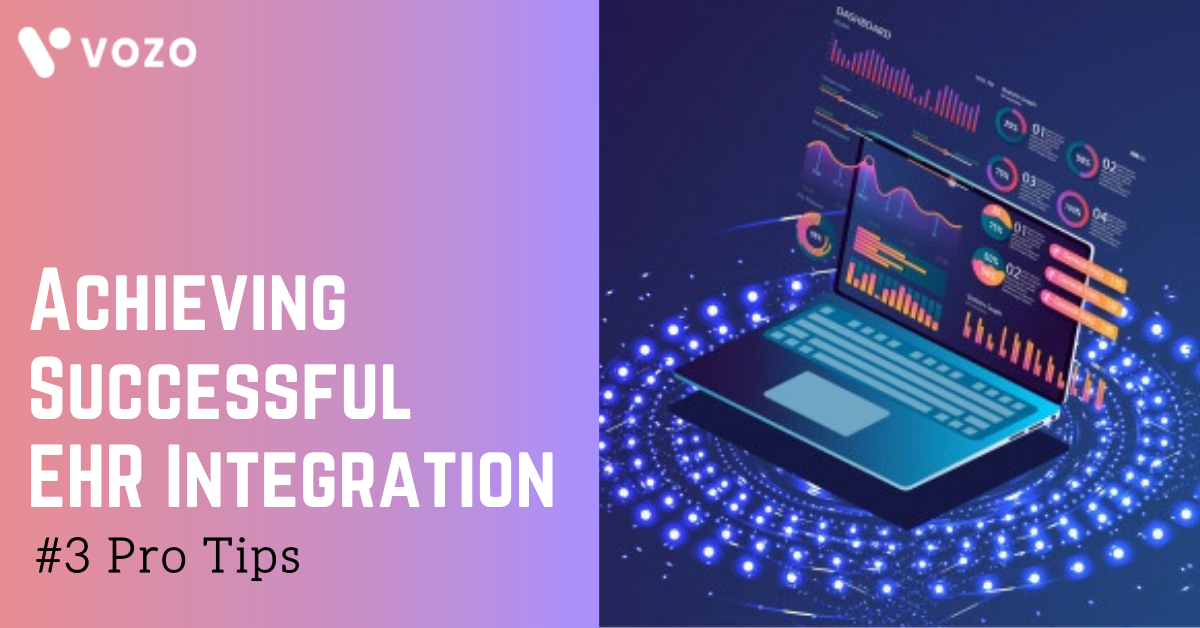Achieving Successful EHR Integration: 3 Pro Tips
The Covid-19 pandemic presents the U.S. health care system with a mind-boggling array of challenges in dealing with patient health data. The electronic health record must transition from an emphasis on a person’s medical record to an emphasis on a person’s plan for health and from a focus on supporting clinical transactions to a focus on delivering information to the provider and the patient.
An EHR integration is essential, but how to achieve it successfully? Here are the 3 pro tips to achieve successful EHR integration by overcoming the technical and administrative challenges.
3 Pro Tips For Successful EHR Integration
1. Use Standards For exchanging Health Information
For decades, healthcare IT leaders have promoted the use of common exchange standards to facilitate the exchange of electronic health information. HIPAA put this concept into law and developed it further in the HIPAA transactions standards. The transaction rule adopted the use of the ANSI X12 standards as well as the NCPDP exchange standards for pharmacy-related transactions. This rule, combined with the healthcare exchange requirements in the HITECH Act, has supported significant progress in the sending and receiving objectives of interoperability.
API For Information Exchange:
Organizations behind recent standards development efforts are attempting to push the boundaries of interoperability further; their focus includes more real-time, or near real-time, exchange of health information and analytics and provisioning the relevant health information for providers at the point of care.
APIs are integral to many of these efforts, as they allow third parties to access the data and data models within other software applications and apply their tools to the data, as well as deliver their outputs or data analysis back into the primary user’s EHR.
Open API For Achieving Integration:
APIs can enable platforms that aggregate data across multiple providers or vendors that could ultimately help facilitate a widely adopted, fully integrated digital healthcare ecosystem. As publicly available APIs that allow users to access data with few restrictions, open APIs can support further integration. The U.S. Department of Health and Human Services will likely create a definition of open APIs in healthcare that will include openly published specifications.
From a software vendor perspective, the definition of open API would include critical concepts:
Another software vendor can use APIs solely with the permission of a healthcare provider without requiring permission from the originating vendor; the healthcare provider should not have to make a special effort to access the API.
The API should allow both a bulk extract of historical data and a real-time update of new data. The software vendor should not put limits on the data extracted or the frequency of data requests. The software vendor may not charge more than a nominal fee for using the API and may not restrict healthcare providers in any manner, whether verbal or written, from providing access to the API to any software vendor they choose.
RELATED: Checklist To Find The Best EHR For Your Practice
HL7 FHIR Standard:
Health systems are widely adopting the FHIR standard, which builds on the HL7 standard, for the exchange of health information. Also, the SMART on FHIR platform and the CDS hooks specification have made significant advances in providing a framework for the real-time exchange of health information. These standards and specifications provide the framework for rapid advances in EHR integration.
2. Achieve Functional Integration
In addition to standards that facilitate the exchange of electronic health information, to achieve true integration, health systems need the will to address the technical and administrative challenges. Even with the wide adoption of SMART on FHIR, health systems and vendors must enable and configure their systems for integration; standards alone won’t enable integration.
For example, if a health system wants to include information on social determinants of health affecting a patient’s care that’s available from third-party data sources, it must configure its EHR system so that these factors appear in a window within the encounter or use another method that makes the information available to the EHR user. The fact that both the source systems and the EHR are using FHIR does not automatically make the information appear. Health systems must take steps to use the tools and standards to make them a regular feature of the encounter screen in the EHR.
3. Develop Use Cases For EHR Integration
There are many potential use case examples of information that integration would make available in the EHR and that would prompt clinical action:
- A priority list of patients who may be at risk for pneumonia or sepsis.
- A prioritization of patients, based on healthcare and other data, of who would benefit from referral to a social worker.
- Information on a patient’s medication adherence and medications that have worked in the past to help the patient to maintain compliance with medications.
Final Thoughts
The ongoing transformation in the healthcare industry is paving the way for the successful EHR integration that brings real-time, data-driven insight into the point of care. So, the health systems can ensure continued progress with the help of advanced healthcare information standards, administrative processes, and functional integration to improve clinical workflow.
Look For The Best EHR Software For Your Practice?
About the author

With more than 4 years of experience in the dynamic healthcare technology landscape, Sid specializes in crafting compelling content on topics including EHR/EMR, patient portals, healthcare automation, remote patient monitoring, and health information exchange. His expertise lies in translating cutting-edge innovations and intricate topics into engaging narratives that resonate with diverse audiences.













